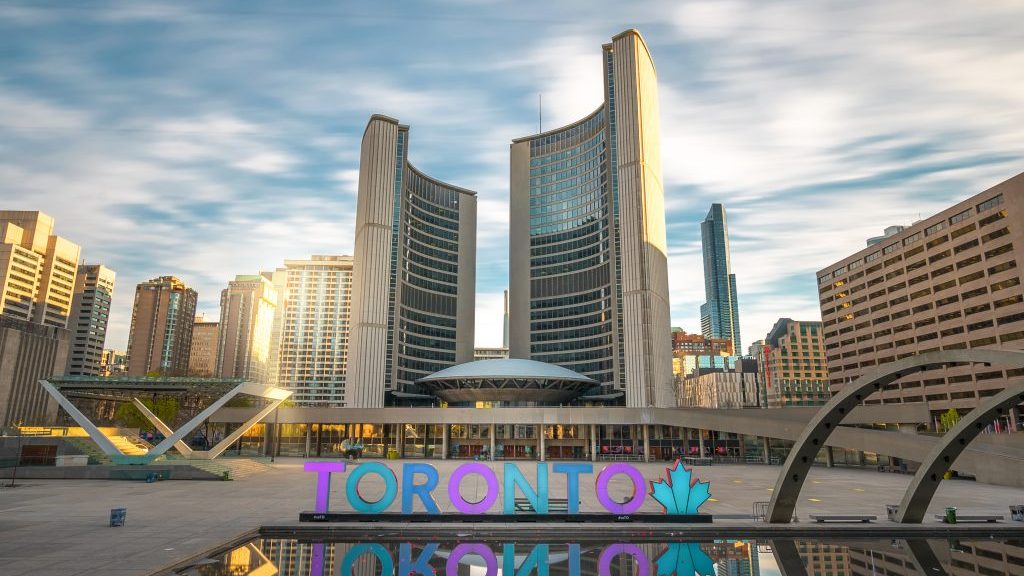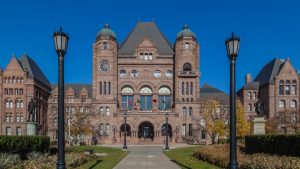The City of Toronto’s $23-billion-dollar affordable housing plan is blinkered, say construction sector leaders, economists and bank presidents.
While Richard Lyall, president of the Residential Construction Council of Ontario (RESCON) and Building Industry and Land Development Association (BILD) President and CEO Dave Wilkes say the work is welcome but it falls short of demand.
“It’s a supply chain issue,” Lyall says. “They’re 20,000 units a year short. They look at it from the wrong end. I’ve never seen a politician say, ‘how many houses do we need to keep pace with the demographic and growth and how are we going to get them built.’ ”
Last December city council triggered a large property tax hike to fund a $23.4 billion plan over the next decade to build 40,000 new, affordable rental units. It is also contingent on 65 per cent of the funds from the Province of Ontario and the federal government.
“Over 94,000 households (or 17.5 per cent of all private households) pay over 50 per cent of their income on housing,” the staff report advised. “Most shelters continue to operate at capacity with over 7,500 users on any given night.”
It defines affordable rent as up to 30 per cent of household income on housing costs.
With one million new residents in Toronto arriving by 2030, the city says it will create 10,000 affordable rental units on city owned land by waiving development charges, fees and property taxes for 99 years. It also wants to build 10,000 more units on provincial and federal lands while repairing 58,000 and adding 14,000 more Toronto Community Housing units.
It’s not just lower-income, it’s middle-income people, they also can’t keep up,
— Frank A. Clayton
Ryerson University
It’s a grand vision but like Lyall, Wilkes is skeptical saying development charges, levies, fees, permits and delays all add up to tack 25 per cent onto the cost of a new housing unit and that’s a massive factor in meeting the gap.
“This is an opportunity because I think they now know they need to speed up approvals, and defer development charges, these kinds of things we’ve been saying for years. In can take 10 years to get a project finished and that’s just too long,” says Wilkes. “There are 150,000 people coming to the GTA (Greater Toronto Area) every year and will continue for 30 years. The market is out of balance and it’s a generational issue we need to address with great urgency.”
Change in development approach is critical, he says.
“We need to change the narrative,” Wilkes says, noting areas around transit should be pre-zoned for higher densities as soon as the lines are approved. “There’s 160 kilometres of main streets where there should be zoning for development as a right for six to eight or 10 to 12 storeys.”
Both Wilkes’ and Lyall’s comments were echoed recently by Royal Bank of Canada CEO Dave McKay and Scotiabank president and CEO Brian Porter.
“We have to make sure housing markets are in balance,” Porter told the Financial Post, adding the bank sees a housing shortage persisting. “So, rather than look at the demand side of the equation, let’s look at the supply side. Everybody wants to talk about the demand side without looking at the supply side.”
Frank A. Clayton, a senior research fellow at Ryerson University’s Centre for Urban Policy and Land Development, says in a report for the Toronto Regional Real Estate Board released in February that affordability is contingent on regional economic activity, employment and ultimately the supply of different types of housing.
The study found jobs are growing in the GTA at about 65,000 a year with more people and immigrants subsequently being attracted yet the housing supply isn’t keeping up.
“It’s not just lower-income, it’s middle-income people, they also can’t keep up,” Clayton says. “Toronto’s issue is mainly dealing with the middle-income range. You’re not really helping lower-income people.”
The city’s plan to simply build housing and label it “affordable” is just ‘tinkering,’ he says.
“You can’t solve overall affordability building a few units,” he says. “Government can’t spend its way out of this. We need a hell of a lot more units in the market. This is also a regional problem. Let’s say they get prices down. All those people from the surrounding regions will just move in.
“Toronto is growing, it’s not stagnant,” Clayton says. “If it wasn’t growing we could do something about affordability. I think the province is moving in the right direction, by changing the planning system and the tribunals.”
Lyall points to the approach in Tokyo 18 years ago where planning and zoning was taken over by the federal government.
It simply decreed what could be built according to geographic zoning and let developers build by default. Since then, housing prices in the city of 13.9 million people have risen only 45 per cent as supply meets demand.
“If you are serious about housing make that your prime objective,” Lyall says. “Change the planning system, revolutionize it. Make it so ratepayers have less say to end delays.”











Recent Comments
comments for this post are closed